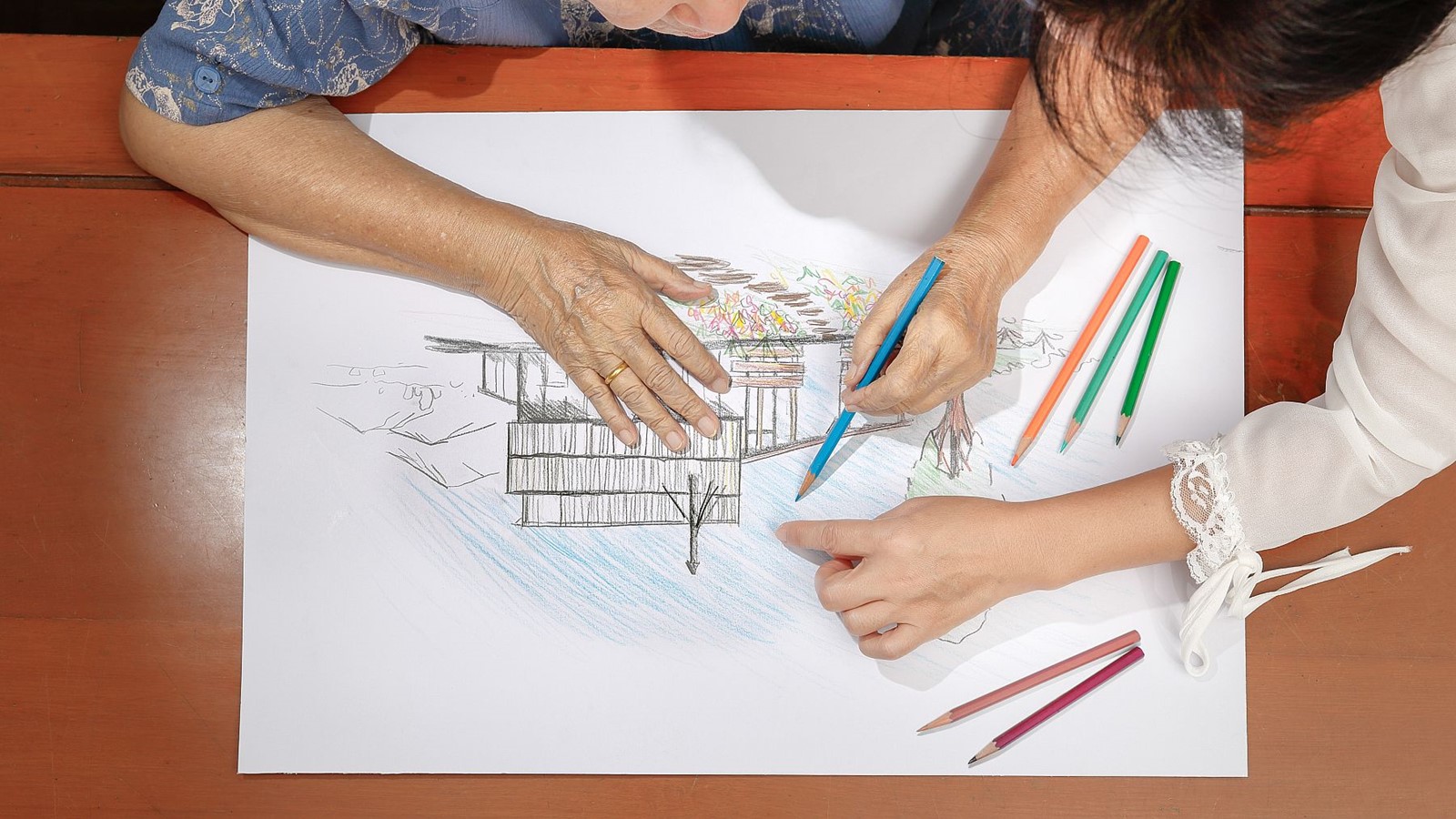Art therapy can help you to express and understand yourself and your experiences through both talking and creative activities. You don’t need to have any previous art experience or be good at art to benefit from it.
In an art therapy session, you're encouraged to use creative media – such as painting or clay - while being supported by a trained art therapist. Your therapist will help you explore how your creative process is linked to your feelings and perceptions, giving you a greater understanding of yourself. They'll also support you in using this understanding to make positive changes in your life.
“Some people find talking about themselves daunting. They can find it hard to put into words how they feel and what they’re going through,” says our member Marion Major, who is also a registered art therapist.
“Art therapy reaches a client's internal world and brings that out in the external world to explore.”
How does art therapy work?
Art therapy can involve any type of creative activity – such as painting, drawing, sand tray, sculpture, puppets, clay-modelling or even music and movement.
“Whenever we create something, we always put parts of ourselves into it,” says Marion.
“As art therapists, we help you to explore and understand how you are represented within the image. You can see what resonates with you, and experiment with choice and change.”
For example, Marion says a client may feel like they have a ‘knot’ inside them.
“They may create a representation of that knot in the session, then we’ll work with it, move it, explore it. It can help them understand why they’re feeling like that and the changes they can make.”
Sand trays are another medium therapists may use to help clients explore themselves and their experiences, creating moveable images using figures and objects in the sand.
“You can use objects in the sand to explore different situations or you can change the landscape of the sand," says Marion. "This process can be helpful as it allows you to play with the image and make changes, gaining insight, awareness and understanding.”
When you finish your therapy, you can look back through the images you’ve created during the past weeks and months. “This gives you a visual journey through your therapy," adds Marion. "It can be very powerful to see.”
What does an art therapist do?
Art therapists are professionals trained in both art and psychotherapy. They give you a safe space to talk about how you feel, and won’t judge you.
“I start each session with a check in to understand how the client is doing,” says Marion. “Sometimes people don’t want to talk, they want to move straight to the creativity. That’s absolutely fine. Or sometimes there may be more talking."
“I may ask questions during the creative process and discuss not only the images but what the process of creating feels like. This helps gain a deeper level of understanding of how that relates to what’s happening for the client internally.”
Your art therapist can support and help you understand how changes to your image or creative response may represent changes to your personal situation and how you respond. They can help you to cope and make changes to your life.
What can art therapy help with?
Art therapy can help with a range of conditions and situations, depending on the therapist’s training and approach. It is often used to help those who have experienced abuse, relationship difficulties, loss or trauma. It can also help you cope with life’s everyday challenges.
Who can benefit from art therapy?
Art therapy can help children and adults – especially those who struggle to put how they feel into words.
“It can help anybody who is willing and open to creating from within themselves,” says Marion.
How do you find an art therapist?
Art therapists must be registered with the Health and Care Professions Council (HCPC) and the British Association of Art Therapists (BAAT). It’s important to check your art therapist is qualified and registered with these relevant professional bodies. You can find registered art therapists, who are also BACP members, through our directory.
What therapy can help with
Find out more

What is counselling?
Find out how counselling works, what therapists do and what happens in a therapy session.

Therapist Directory
How to use our online therapist directory to search for a counsellor or psychotherapist by location, services or specialisms

What therapy can help with
An A-Z list of issues and concerns which may be helped by talking to a counsellor.
